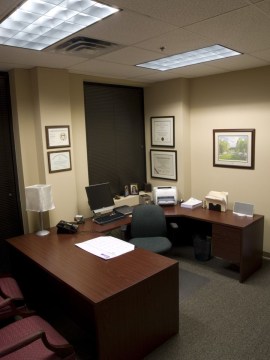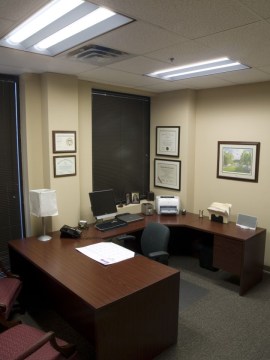by Kurt Vogel — Lighting retrofits are an excellent solution for upgrading antiquated lighting systems with parabolic or lensed troffers. A modern solution delivers superior illumination, aesthetically appealing luminaires, energy and maintenance efficiencies and supports sustainability goals.
Now is the perfect time to take advantage of the energy saving solutions provided by lighting retrofit installations. The Department of Energy (DOE) mandated lighting manufacturers phase out production of most T12 lamps by July 2012 to help increase energy efficiency of linear fluorescent lighting. However, according to the DOE’s 2010 U.S. Lighting Market Characterization report released January 2012, of the 2.4 billion linear fluorescent lamps that are installed across the country, nearly one billion of these are still T12s. As of July, these old lamps no longer have available replacements. Accordingly, facilities should consider upgrade lighting sooner than later, before maintaining an outdated system becomes even more difficult and delays work flow.
Until recently, building owners and managers had four basic options to retrofit lighting; a relamp and reballast, a delamp and reballast using a reflector kit, a one-for-one replacement or complete redesign. However, a new generation of lighting retrofit kits provides an excellent solution to replace old, inefficient lighting.


Retrofit kits – available in fluorescent and LED options – enable installation of components into the housing of old fixtures, maintaining their integrity and delivering the appearance and efficiency of a modern fixture. In addition to better light quality and aesthetics, retrofit kits are installed from below the ceiling plane for virtually no disruption to an organization’s productivity.
The following factors should be considered when selecting a retrofit solution:
- Project payback should occur within two to three years of the installation.
However, additional considerations (architectural upgrades, more extensive controls systems, etc.) may still make a project attractive even when paybacks are longer. - Business disruption should be minimal.
Look for retrofit products that can be installed quickly from below the ceiling, without disturbance to existing ceiling tiles. Retrofit materials should be packaged and delivered in a way that minimizes waste disposal and/or is recyclable. - The new lighting should enhance the look and feel of the space.
Older parabolics and lensed troffers can be upgraded to newer “volumetric” performance that improves lighting distribution, reduces glare, and makes the space feel brighter. - A good retrofit lighting assembly should be as universal as possible.
It should work seamlessly within the framework of many existing fixtures, making current and future jobs easier for the facility. The retrofit solution should be applicable to most or all manufacturers’ fixtures. - Ensure the selected retrofit products will fit within the current ceiling system.
In many buildings built during the 1970’s, an anticipated shift to the metric system sparked facilities to use metric ceiling grid specifications. These facilities’ ceiling grids are 1200mm x 600mm, making them about inch smaller than a standard 2′ x 4′ ceiling. It is critical to assess in advance whether the facility is metric or standard, and if necessary, ensure the lighting retrofit manufacturer offers custom solutions to fit the metric grid. - The chosen solution should be UL Classified in order to avoid issues with inspectors or insurance adjusters.
Additionally, many older lighting fixtures are being used in some air-handling capacity such as air-supply or heat removal. Be careful the retrofit product selected is compatible with air-handling applications and UL Classified for that use. - It should be packaged effectively for easy installation.
It should save on time and labor, as well as supporting supply chain efficiencies. Retrofit kits should be packaged with the installer in mind, arriving on as few pallets as possible with all components necessary for installation in one place. Consider specifying that pallets used are of a size that will fit through doorways and on standard elevators. This minimizes time spent searching for components as well as eliminates energy wasted on moving heavy parts and maneuvering existing furniture.
Current market factors including available rebates, the government phase-out of most T12 fluorescent lamps and new retrofit technology are making it easier, faster and more cost efficient for facilities to upgrade lighting systems. However, it is imperative the best retrofit lighting solution is selected to ensure maximum results are achieved.
About the Author:
Kurt Vogel work in product development for Lithonia Lighting and has more than 22 years of experience in the lighting industry. Most recently he drove the development of Lithonia Lighting’s first indoor, ambient LED relight product, RTLED Relight. He can be reached at Kurt.Vogel@AcuityBrands.com. For more information visit www.lithonia.com/Relight.